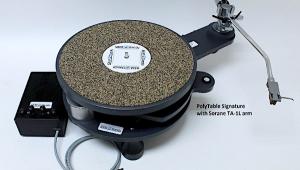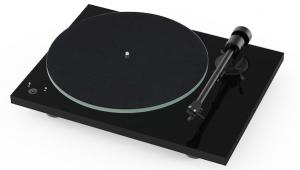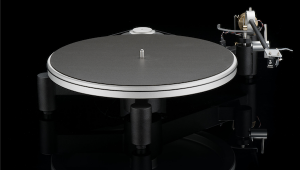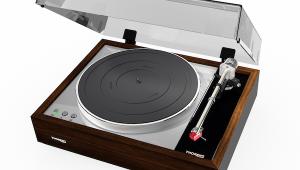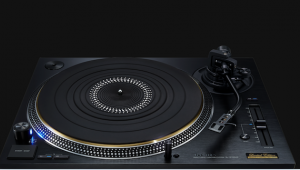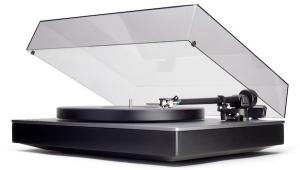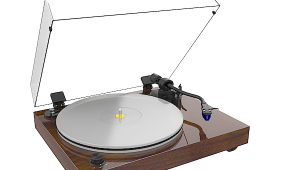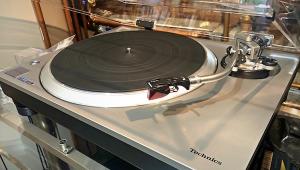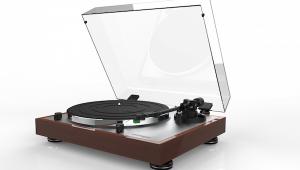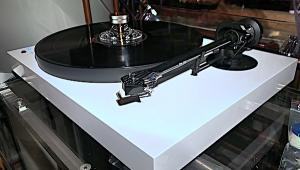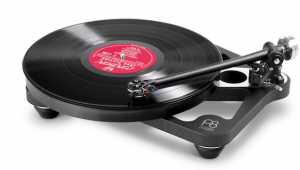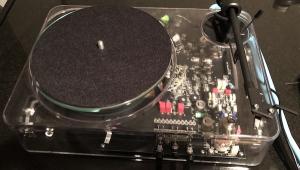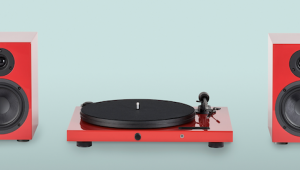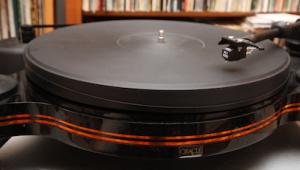Select a VPI Prime Turntable And Make A Great Choice
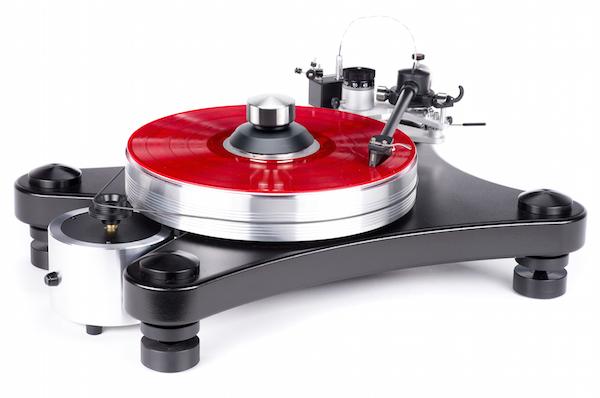
The young Weisfeld mostly chose from among existing VPI parts and ideas used in other of the company’s turntables, while being mindful of hitting the intended $3995 price point, including 3D printed arm.
Spend a few months with the Prime and you’ll understand why the company’s next gen turntables will more resemble the Prime than the older Classic series.
For starters, the Prime’s sculpted, curvaceous look is far more attractive than squaresville, good as the Classic series is in terms of its sonic performance.
The Classic series proved that you can build a motor into the chassis and still get quiet in the grooves but by sculpting the sides of the Prime’s chassis, an outboard motor can be accommodated in a not much bigger footprint and less heroic efforts are involved in isolating the motor from the platter and tone arm.
The Classic Signature with built-in motor weighs sixty-five pounds and is 19.25”x14.25”. You can read my review of the roughly similar Classic 3, which back in 2011 cost $6000. It was heavier (81 pounds) and was 22” wide and 10” deep.
That $6000 turntable features a massive plinth structure in which a ½"-thick plate of machined aluminum is bonded to a 1/8"-thick steel subplate that itself is bonded to 2" of MDF. The aluminum platform sat in a lustrous piano-black lacquer plinth.
Yet despite all of this heroic mass damping and newly designed feet, I found that “tapping either the aluminum top plate or the lacquered periphery produced a fairly loud knocking sound from the speakers”. As I wrote in that review “, how a turntable responds to such an impulse doesn't necessarily indicate how it deals with sustained musical signals”, but clearly effective isolation from impulse-type noise is better.
So here’s the thing: the Prime is a sculpted slab of MDF over which is a black textured vinyl layer and under which is bonded an eleven gauge, (relatively thin) steel plate designed to control resonances and provide feedback rejection, sitting on four new “Prime” Delrin cones attached to the plinth via solid Delrin corner assemblies. VPI also supplies four Delrin discs into which the cones fit, where they are cradled by energy diffusing ball bearings.
This is a far less costly, less complex assemblage than that of the Classic 3 I reviewed, yet I found it better (or perhaps equally) rejected impulse noise when I tapped on the stand, or the plinth with the stylus sitting in the groove of a stationary record and the volume at normal playback level.
So today, with the $4000 Prime, you can get comparable (if not better) impulse rejection than with the $6000 Classic 3 of five years ago.
What’s more you get an outboard 300 rpm 24 pole AC synchronous motor capable of high torque and quiet operation topped with a stepped Delrin pulley installed in a separate massive aluminum and steel machined assembly. The entire assemblage including the outboard motor has a footprint of approximately 23" x 13 3/4", which is not that much bigger than the Classic 3.
Prime Particulars
The Prime spins records on an inverted bearing featuring a hardened stainless steel shaft atop of which is a 60 Rockwell chrome hardened ball. The ball rides on a “PEEK” (Polyether ether—a colorless organic thermoplastic polymer in the polyaryletherketone (PAEK) family) thrust pad located at the top of the phosphor bronze bushing, machined into the center of the twenty pound damped platter’s underside. The platter, damped on its underside, is of 6061 aluminum machined to ± .001 in 39” circumference.
The inverted bearing naysayers will tell you that inverting the bearing puts closer to the record surface the noise generated by the ball/thrust pad but in my experience, particularly at this price point, if done correctly it’s a quiet and cost-effective design choice that’s used on other VPI turntables. That is a great deal of engineering, machining and metal for a $4000 turntable including a tone arm, which is a 10 inch version of VPI’s well-received 3D “printed” design featuring “on’-the fly” VTA/SRA adjustability. You also get a screw on Stainless Steel/Delrin record clamp. VPI saves a few bucks by supplying a slip cue type mat. That’s fine. Most people want to roll their own anyway.
Easy Set Up
The ‘table is so easy to set up it’s not worth recounting other than to point out that the multI-grooved pulley offers you various diameters so you can get precise speed accuracy without adding an outboard motor controller so be sure to find the groove for each speed that produces the greatest accuracy (and remember it for when you switch to 45rpm and back!).
Setting up the 10 inch 3D arm can be done in one of two ways: the basic way, wherein to set VTA/SRA you set the arm parallel to the record surface and either leave it, or adjust by listening. And, to set azimuth use the supplied rod and adjust the unipivot arm until the rod is parallel to the record surface.
Or you can use a digital microscope to set VTA/SRA to 92 degrees and with a test record use either a Fozgometer, the Feickert Adjust + software, a digital oscilloscope or a digital voltmeter following the directions on “Michael Fremer’s Practical Guide to Turntable Set Up DVD”.
The better you dial in the arm the better will be the final sonics. Of course I did it with measurements using the microscope and an oscilloscope. No guess work, no futzing around.
VPI supplies a useful VTF (vertical tracking force) gauge for setting tracking weight but when it comes to using the anti-skating device, you are on your own, knowing that VPI “doesn’t believe” in anti-skating. I know skating is real (and so does VPI). We just differ as to whether compensating for it improves or worsens the sound.
You can try it both ways and decide for yourself but if you are tracking at between 1.75 and 2.2 grams use three O-rings placed at the end of the anti-skating lever. I base that on measurements using the “Wallyskater” device and backing it up with Telarc’s Omnidisc test record that has the best anti-skating track ever.
Since I won’t use either a felt or whatever the supplied slipcue mat is made of, because these are dust magnets, I used the thinnest available Funk Firm Achromat, which I think is among the best, most effective mats out there.
I set up a number of cartridges I felt were appropriate for a $4000 arm/’table combo and settled on an older Lyra Helikon SL, which new sold for about $2500.
It’s funny when the standard output Helikon was introduced to replace the Clavis d.c.T, Lyra didn’t raise the price though the Helikon was a completely new and far superior design. Later when readers asked “I have a Helikon and want to upgrade to a $3000 cartridge, what do you recommend? I responded: “You already have a $3000 cartridge that Lyra sold your for $2000 so just keep and enjoy it.”
Prime Speed Accuracy
Using the Platterspeed application, I was able to find the pulley groove that produced close to perfect speed with a 3150Hz test tone averaging 3151.1Hz. A $19,000 turntable I recently reviewed for Stereophile showed less relative and absolute deviation from exact speed, but these raw and low-pass filtered measurements were very good.
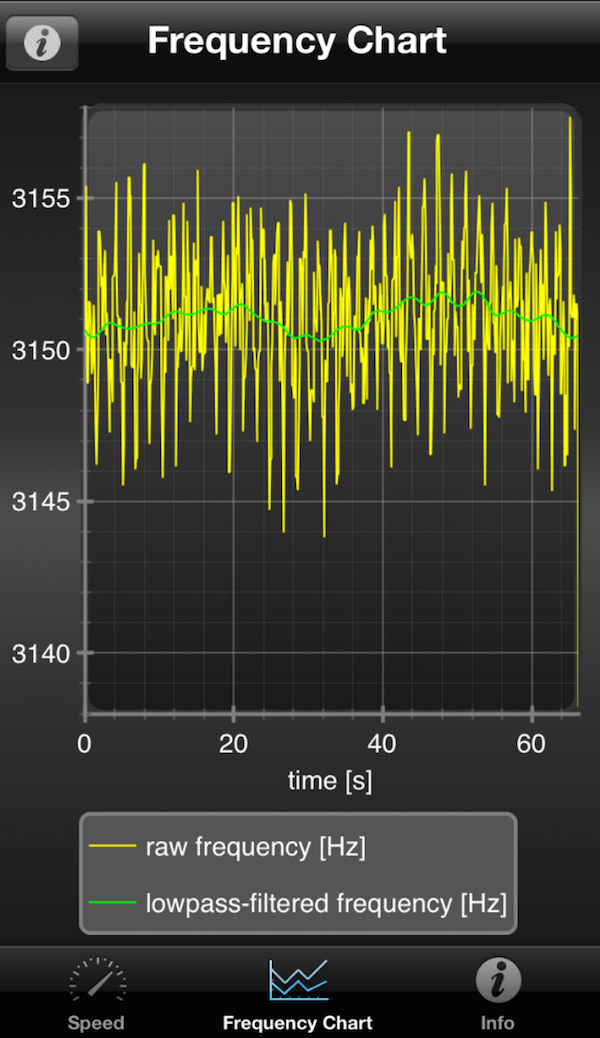
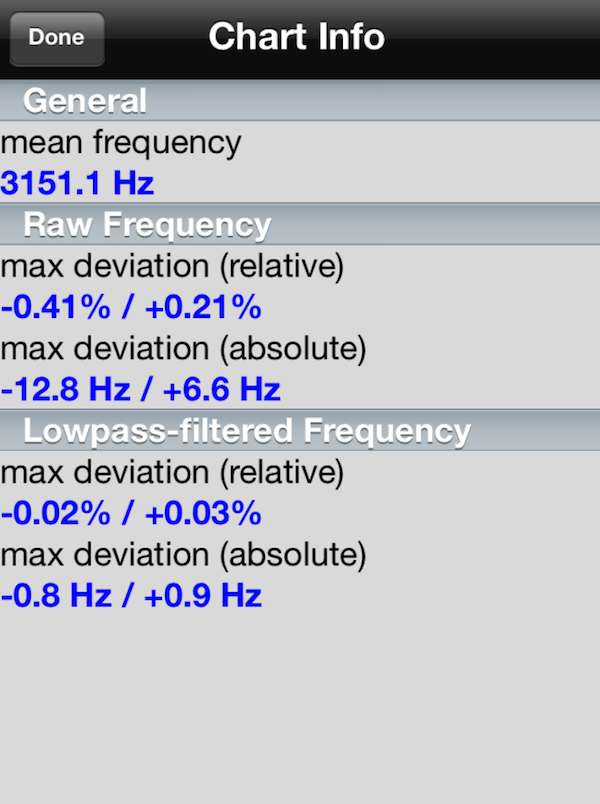
Prime Sound
The Lyra Helikon is from a time when Lyra cartridges tended to be very well-detailed but somewhat threadbare in the midrange—more on the analytical side than the lush. This was easily solvable by running it into a phono preamp that was ever so slightly midrange lush but only if you didn’t like how it sounded into a more neutral phono preamp, which is how I liked it. To each his own.
The Helikon through the remarkably neutral and ultra-quiet soon to be reviewed Audio-Alchemy PPA-1 phono preamp ($1795) was on the perfect side of “lush”, which told me that in the midrange, the Prime was just the right side of “lush”.
I also tried the circa $20,000 TruLife Argo tube-based phono preamp from Greece. Why do that? Because I could! The Prime communicated what I knew to the be Argo’s seamless sound as I got to know it on my big ‘table, which I describe in an upcoming review as “... silky smooth and extended on top, with an enticing sense of musical flow and richly drawn instrumental timbres.”
When I fitted the ‘table with the midband-rich $8995 Lyra Etna, which I doubt any Prime buyer will do, the superbly dynamic and extended cartridge demonstrated the ‘table’s overall tonal neutrality and particularly its remarkably well-controlled and extended bottom end. It’s not the last word in terms of taut bass control but neither is it at all soft and mushy. It dared to go deep while maintaining good grip.
I played American Tunes (Nonesuch 554656-1 2 LPs) the late Allen Toussaint’s final album produced by Joe Henry. Piano is as good a test of a turntable’s abilities as I can think of and this well-recorded record demonstrated that the ‘table and arm could produce a large, well organized picture, with an appropriately wide and deep soundstage upon which was a well-focused, timbrally and dynamically convincing piano. Moreover, on the many solo piano tracks, where you’re treated to an intimate Allen Toussaint recital, the background blackness was startling because it’s usually experienced with far more expensive turntables. Though piano recordings tend to be difficult to track, the 3D arm sailed through this and other recordings without ever producing mis-tracking "crackles".
The solo piano tracks were recorded at Toussaint’s New Orleans studio; the others at United (formerly Ocean Way) and the sound throughout is superb. Chris Bellman cut from Bob Ludwig-supplied high resolution files and this is one record where the storage medium takes a backseat to the room, the microphones and the skill of the engineer Ryan Freeland (he also did Ray Lamontagne’s God Willin’ And the Creek Don’t Rise. I can’t recommend an album more highly. It will make you feel good and the sound is superb!
Conclusion
So let’s not drag this out: the VPI Prime turntable combines elements from more expensive VPI turntables but uses a smart, new and very attractive plinth, the combination of which produces tonally neutral, well-extended performance, with a pleasing accent on smooth.
Speed stability and accuracy were very good, particularly at this price point. The ‘table does “rhythm’n’pacing very well. Some others may be “faster” but they are also thinner, more analytical and far less enticing.
That for $4000 you get the ‘table, with it’s high mass aluminum alloy platter and a ten inch 3D printed arm that combines rigidity and relatively low mass (but high enough to mate well with medium to low compliance moving coil cartridges as well as higher compliance moving magnet designs like Shure’s M97xe) makes the VPI Prime a difficult to beat turntable/arm at the $4000 price point.
I’ll put it to you this way: I have a $50,000 ‘table/arm here for a Stereophile review as well as my reference Continuum ‘table fitted with the $30,000 Swedish Analog Technologies tone arm and while those extend everything further in every direction, not once while exploring the Prime’s capabilities did I long to move to the more expensive ‘tables whatever record I was playing.
Why? Because the Prime does everything well, is overall so well-balanced and its minor “sins” are all of omission. And don’t forget I’m using it with large, expensive full-range speakers that most buyers will not have.
That said, if someone is “all-digital” and has a system like mine, I’d not hesitate recommending the Prime to that person as a “first encounter” turntable. It’s that good.
News flash: A new VPI tone arm innovation arrived yesterday that’s going on the Prime tonight. Review ASAP!


